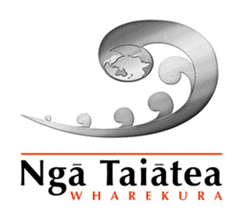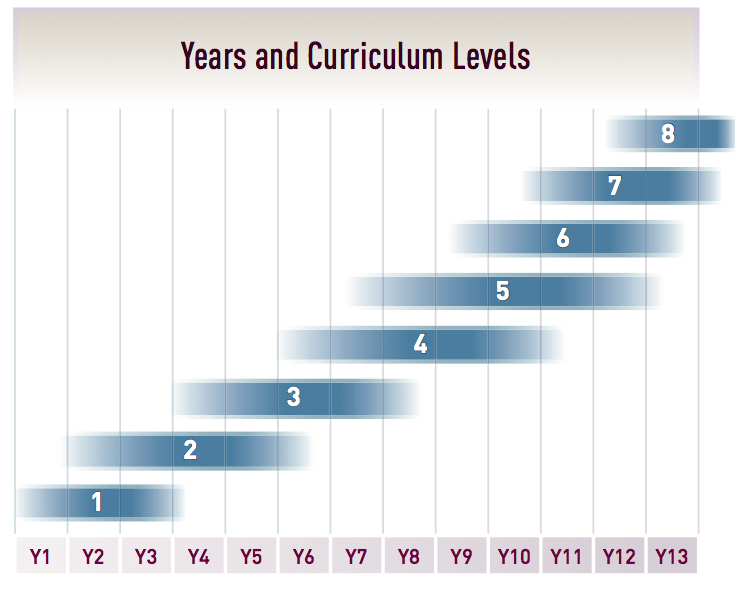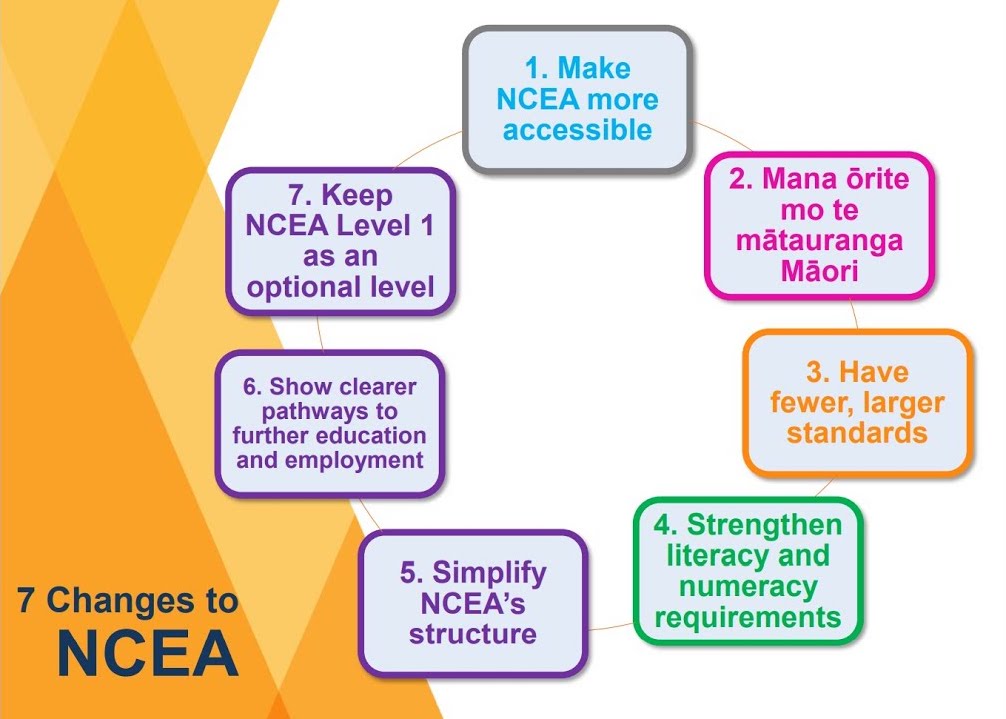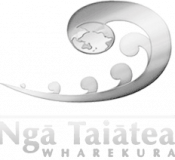Ngā Kauae Mua (Tau 11-13)
Overview
This diagram from the New Zealand Curriculum (NZC) and Te Marautanga o Aotearoa (TMoA) shows how curriculum levels typically relate to years at school. However, not all students fit this pattern. They include students with special learning needs and those who are gifted and talented.
The key thing in making subject choices is to understand what level will best suit each student’s learning. For example, it may be in the best interests of a Year 11 student to be in a Year 10 Pāngarau class to ensure there are no gaps in their learning before moving on to Year 11. Alternatively, a student might be better in a Year 12 Reo Pākehā class because they need to be pushed and extended in this learning area.
Subject Selection Guidance for Year 11, 12 and 13 Students:
NCEA level 1, 2 and 3 Courses
Year 11 Students
Year 11 students will need to select classes for Reo Māori, Te Reo Pākehā and Pāngarau that align with, and support the student’s current learning level according to the New Zealand Curriculum (NZC) or Te Marautanga o Aotearoa (TMoA).
Typically, Year 11 relates to Level 6 of the NZC and TMoA. Many students do not, however, fit this pattern. They may include those with special learning needs, those who are gifted, and those for whom English is a second language. Therefore, a Year 11 student could potentially need to be in a Year 12 class in a particular subject while another Year 11 student might need to be in a Year 10 class if that is what is best for their learning.
Please note that we want to support student’s decisions in regard to the appropriate course for them.
Year 12 and 13 Students
All students are expected to gain NCEA at their year level by the end of the year unless otherwise stipulated in their Rautaki Ako.
If a student needs to go into a class and he/she doesn’t have the requirements, he/she needs to meet with the subject teacher and Kaiārahi to see if this is a possibility. If further discussion is needed, please make contact with the Te Aukaha Takere Aronui Tuākana (Whaea Tania).
Year 12 and 13 students may also opt into Taumata 1 or 2 classes offered if agreed upon by the Te Aukaha Takere Aronui Tuākana (Whaea Tania).
All students must gain Literacy and Numeracy Level 1, gaining 10 credits in each. These key elements are needed to gain NCEA.
Year 12 and 13 students may need to follow specific fields of learning to support their Rautaki Ako. For example, STAR courses, Te Kura courses and other external programs. This will be a case by case situation. The student will need to hui with the Te Aukaha Takere Aronui Tuākana (Whaea Tania) and Kaihautū Takere Hapori (Whaea Mel).
In regards to subject selection, students have the opportunity to choose the subjects that will develop their knowledge and expertise regarding their chosen area and ensure that the choices they make best prepare them for their post -Taiātea pathway.
Students choose the combination of courses/subjects or modules that will support their future plan and aspirations.
Subject Selection
Core Subjects
- Te Reo Māori
- Te Reo Pākehā
- Pāngarau
Option Subjects
- Hauora
- Kaipakihi
- Kaiora
- Kaiurungi
- Puoro
- Rorohiko
- Raranga
- Tū Taua
- Toi
- Pūtaiao
- Whakairo
- Te Ao Haka
Qualifications – NCEA Requirements: Ka taea e ngā uri katoa!
80 credits are required at any level (level 1, 2 or 3)
+Level 1 Literacy – 10 credits at level 1 or above
+Level 1 Numeracy – 10 credits at level 1 or above
60 credits at level 2 or above
+20 credits from any level
+level 1 Literacy and Numeracy
60 credits at level 3 or above
+20 credits from level 2 or above
+level 1 Literacy and Numeracy
University Entrance (UE) is the minimum requirement for getting into a New Zealand university. Many universities and other tertiary providers have further programme-specific entry requirements. You’ll need to talk to them to find out the exact requirements for individual programmes of study, including limited entry programmes.
NCEA level 3
14 credits in 3 approved level 3 subjects
Literacy – 10 credits at level 2 or above (5 Reading and 5 Writing)
Numeracy – 10 credits at level 1 or above
These changes have been made for 2022:
To be awarded University Entrance you will need 14 credits in each of 2 UE Approved Subjects, and 12 credits in a third UE Approved Subject (you also need to attain NCEA Level 3 and meet literacy and numeracy requirements).
Students should be aiming to achieve subject endorsement – 14 or more credits at Achieved or Merit or Excellence, and at least 3 of these credits from externally assessed standards and 3 credits from internally assessed standards. Note, this does not apply to Physical Education, Religious Studies and level 3 Visual Arts.
Gaining an endorsement at Merit or Excellence level is an advantage. If a student is having to compete for a place in a course or for employment, having an endorsement gives something of an indication of ability and work ethic.
There are major opportunities in the world if a student gains NCEA level 1, 2 or 3 with either merit or excellence endorsement. If you gain 50 merit or excellence credits at the NCEA level, you will receive NCEA with merit or excellence.
2022 UPDATES: To receive a Certificate Endorsement, you will need 46 credits at Merit or Excellence level, instead of the usual 50.
Hybrid Learning
In these uncertain times we want to support our uri whether they are at kura or at home. To do this every class has a Google Classroom in which the kaiako keeps updated with the teaching and learning programme. The students are able to submit work, ask questions and keep up to date regardless of their location.



